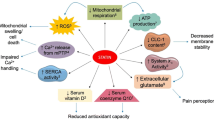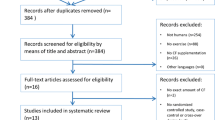Abstract
Homocysteine is an amino acid produced in the liver that, when present in high concentrations, is thought to contribute to plaque formation and, consequently, increased risk of cardiovascular disease. However, daily physical activity and training programs may contribute to controlling atherosclerosis. Given that physical exercise induces changes in protein and amino acid metabolism, it is important to understand whether homocysteine levels are also affected by exercise and to determine possible underlying mechanisms. Moreover, regarding the possible characteristics of different training programs (intensity, duration, repetition, volume), it becomes prudent to determine which types of exercise reduce homocysteine levels. To these ends, a systematic review was conducted to examine the effects of daily physical activity and different training programs on homocysteine levels. EndNote® was used to locate articles on the PubMed database from 2002 to 2013 with the keyword combinations “physical activity and homocysteine”, “training and homocysteine”, and/or “exercise and homocysteine”. After 34 studies were identified, correlative and comparative studies of homocysteine levels revealed lower levels in patients engaged in greater quantities of daily physical activity. Regarding the acute effects of exercise, all studies reported increased homocysteine levels. Concerning intervention studies with training programs, aerobic training programs used different methods and analyses that complicate making any conclusion, though resistance training programs induced decreased homocysteine levels. In conclusion, this review suggests that greater daily physical activity is associated with lower homocysteine levels and that exercise programs could positively affect homocysteine control.

Similar content being viewed by others
References
Bizheh N, Jaafari M (2011) The effect of a single bout circuit resistance exercise on homocysteine, hs-CRP and fibrinogen in sedentary middle aged men. Iran J Basic Med Sci 14:568–573
Boreham CAG, Kennedy RA, Murphy MH, Tully M, Wallace WFM, Young I (2005) Training effects of short bouts of stair climbing on cardiorespiratory fitness, blood lipids, and homocysteine in sedentary young women. Br J Sports Med 39:590–593. doi:10.1136/bjsm.2002.001131
Brustolin S, Giugliani R, Félix TM (2010) Genetics of homocysteine metabolism and associated disorders. Braz J Med Biol Res 43:1–7
Cappuccio FP, Bell R, Perry IJ, Gilg J, Ueland PM, Refsum H, Sagnella GA, Jeffery S, Cook DG (2002) Homocysteine levels in men and women of different ethnic and cultural background living in England. Atherosclerosis 164:95–102
Chrysohoou C, Panagiotakos DB, Pitsavos C, Zeimbekis A, Zampelas A et al (2004) The associations between smoking, physical activity, dietary habits and plasma homocysteine levels in cardiovascular disease-free people: the ‘ATTICA’ study. Vasc Med 9:117–123
Czajkowska A, Lutoslawska G, Mazurek K, Ambroszkiewics J, Zmijewski P (2008) The relationship between physical activity and plasma homocysteine level in young men. Pediatr Endocrinol Diabetes Metab 14:177–180
Czajkowska A, Lutoslawska G, Mazurek K, Ambroszkiewicz J, Zmijewski P (2011) Plasma homocysteine levels, physical activity and macronutrient intake in young healthy men. Pediatr Endocrinol Diabetes Metab 17:30–34
Da Cunha MJ, da Cunha AA, Ferreira AG, Machado FR, Schmitz F et al (2012) Physical exercise reverses glutamate uptake and oxidative stress effects of chronic homocysteine administration in the rat. Int J Dev Neurosci 30:69–74. doi:10.1016/j.ijdevneu.2012.01.001
Dankner R, Chetrit A, Dror GK, Sela BA (2007) Physical activity is inversely associated with total homocysteine levels, independent of C677T MTHFR genotype and plasma B vitamins. Age 29:219–227. doi:10.1007/s11357-007-9041-0
De Jong N, Chin A, Paw MJ, de Groot LC, Rutten RA, Swinkels DW et al (2001) Nutrient-dense foods and exercise in frail elderly: effects on B vitamins, homocysteine, methylmalonic acid, and neuropsychological functioning. Am J Clin Nutr 73:338–346
Di Santolo M, Banfi G, Stel G, Cauci S (2009) Association of recreational physical activity with homocysteine, folate and lipid markers in young women. Eur J Appl Physiol 105:111–118. doi:10.1007/s00421-008-0880-x
Gaume V, Figard H, Mougin F, Guilland JC, Alberto JM et al (2005) Effect of a swim training on homocysteine and cysteine levels in rats. Amino Acids 28:337–342
Gelecek N, Teoman N, Ozdirenc M, Pinar L, Akan P et al (2007) Influences of acute and chronic aerobic exercise on the plasma homocysteine level. Ann Nutr Metab 51:53–58
Gottlieb MGV, Bonardi G, Moriguchi EH (2005) Fisiopatologia e aspectos inflamatórios da aterosclerose: artigo de Revisão. Scientia Medica 15:203–207
Guzel NA, Pinar L, Colakoglu F, Karacan S, Ozer C (2012) Long-term callisthenic exercise-related changes in blood lipids, homocysteine, nitric oxide levels and body composition in middle-aged healthy sedentary women. Chin J Physiol 55:202–209. doi:10.4077/CJP.2012.AMM122
Halverstadt A, Phares DA, Wilund KR, Goldberg AP, Hagberg JM (2007) Endurance exercise training raises high-density lipoprotein cholesterol and lowers small low-density lipoprotein and very low-density lipoprotein independent of body fat phenotypes in older men and women. Metab, Clin Exp 56:444–450
Hammouda O, Chtourou H, Chaouachi A, Chahed H, Ferchichi S et al (2012) Effect of short-term maximal exercise on biochemical markers of muscle damage, total antioxidant status, and homocysteine levels in football players. Asian J Sports Med 3:239–246
Hayward R, Ruangthai R, Karnilaw P, Chicco A, Strange R et al (2003) Attenuation of homocysteine-induced endothelial dysfunction by exercise training. Pathophysiology 9:207–214
Hellgren M, Melander A, Ostgren CJ, Rastam L, Lindblad U (2005) Inverse association between plasma homocysteine, sulphonylurea exposure and physical activity: a community-based sample of type 2 diabetes patients in the Skaraborg hypertension and diabetes project. Diabetes Obes Metab 7:421–429
Herrmann M, Schorr H, Obeid R, Scharhag J, Urhausen A et al (2003a) Homocysteine increases during endurance exercise. Clin Chem Lab Med 41:1518–1524
Herrmann M, Wilkinson J, Schorr H, Obeid R, Georg T et al (2003b) Comparison of the influence of volume-oriented training and high-intensity interval training on serum homocysteine and its cofactors in young, healthy swimmers. Clin Chem Lab Med 41:1525–1531
Inglesias-Gutiérrez E, Egan B, Díaz-Martínez ÁE, Peñalvo JL, González-Medina A et al (2012) Transient increase in homocysteine but not hyperhomocysteinemia during acute exercise at different intensities in sedentary individuals. PLoS ONE 7:1–8. doi:10.1371/journal.pone.0051185
Ito H, Antoku S, Furusho M, Shinozaki M, Abe M et al (2013) The prevalence of the risk factors for atherosclerosis among type 2 diabetic patients is greater in the progressive stages of chronic kidney disease. Nephron Extra 3:66–72. doi:10.1159/000353592
Jacob RA, Burri BJ (1996) Oxidative damage and defense. Am J Clin Nutr 63:985S–990S
Joubert LM, Manore MM (2006) Exercise, nutrition, and homocysteine. Int J Sport Nutr Exerc Metab 16:341–361
Joubert LM, Manore MM (2008) The role of physical activity level and B-vitamin status on blood homocysteine levels. Med Sci Sports Exerc 40:1923–1931. doi:10.1249/MSS.0b013e31817f36f9
König D, Bissé E, Deibert P, Müller HM, Wieland H et al (2003) Influence of training volume and acute physical exercise on the homocysteine levels in endurance-trained men: interactions with plasma folate and vitamin B12. Ann Nutr Metab 47:114–118
Leeuwenburgh C, Hollander J, Leichtweis S, Griffiths M, Gore M, Ji LL (1997) Adaptations of glutathione antioxidant system to endurance training are tissue and muscle fiber specific. Am J of Physiol 272:R363–R369
Loprinzi PD, Cardinal BJ (2012) Interrelationships among physical activity, depression, homocysteine, and metabolic syndrome with special considerations by sex. Prev Med 54:388–392. doi:10.1016/j.ypmed.2012.03.016
Mishra PK, Awe O, Metreveli N, Qipshidze N, Joshua IG et al (2011) Exercise mitigates homocysteine -β2-adrenergic receptor interactions to ameliorate contractile dysfunction in diabetes. Int J Physiol Pathophysiol Pharmacol 3:97–106
Molina-López J, Molina JM, Chirosa LJ, Florea DI, Sáez L et al (2013) Effect of folic acid supplementation on homocysteine concentration and association with training in handball players. J Int Soc Sports Nutr 10:1–8. doi:10.1186/1550-2783-10-10
Murakami H, Iemitsu M, Sanada K, Gando Y, Ohmori Y et al (2011) Associations among objectively measured physical activity, fasting plasma homocysteine concentration, and MTHFR C677T genotype. Eur J Appl Physiol 111:2997–3005. doi:10.1007/s00421-011-1926-z
Nascimento CM, Stella F, Garlipp CR, Santos RF, Gobbi S et al (2011) Serum homocysteine and physical exercise in patients with Parkinson’s disease. Psychogeriatrics 11:105–112. doi:10.1111/j.1479-8301.2011.00356.x
Neves LB, Macedo DM, Lopes AC (2004) Homocisteína. J Bras Patol Med Lab 40:311–320
Obeid R, Herrmann W (2009) Homocysteine and lipids: s-adenosyl methionine as a key intermediate. FEBS Lett 583:1215–1225
Okura T, Rankinen T, Gagnon J, Lussier-Cacan S, Davignon J et al (2006) Effect of regular exercise on homocysteine concentrations: the HERITAGE Family Study. Eur J Appl Physiol 98:394–401
Olthof MR, Vliet TV, Verhoef P, Zock PL, Katan MB (2005) Effect of homocysteine-lowering nutrients on blood lipids: results from four randomised, placebo-controlled studies in healthy humans. PLoS Med 2(5):e135
Paffenbarger RS, Hyde RT, Alvin MA, Wing AL et al (1993) The association of changes in physical-activity level and other lifestyle characteristics with mortality among men. N Engl Jf Med 328:538–545
Powers SK, Howley ET (2007) Exercise physiology: theory and application to fitness and performance. Human kinetics, Champaign IL
Prado ES, Dantas EHM (2002) Efeitos dos exercícios físicos aeróbio e de força nas lipoproteínas HDL, LDL e lipoproteína(a). Arq Bras Cardiol 79:429–433
Randeva HS, Lewandowski KC, Drzewoski J, Brooke-Wavell K, O’Callaghan C et al (2002) Exercise decreases plasma total homocysteine in overweight young women with polycystic ovary syndrome. J Clin Endocrinol Metab 87:4496–4501
Rennie MJ, Tipton KD (2000) Protein and amino acid metabolism during and after exercise and the effects of nutrition. Ann Rev of Nutrit 20:457–483
Romaldini CC, Issler H, Cardoso AL, Diament J, Forti N (2004) Fatores de risco para aterosclerose em crianças e adolescentes com história familiar de doença arterial coronariana premature. J Pediatr 80:135–140
Rousseau AS, Robin S, Roussel AM, Ducros V, Margaritis L (2005) Plasma homocysteine is related to folate intake but not training status. Nutr Metab Cardiovasc Dis 15:125–133
Ruiz JR, Hurtig-Wennlöf A, Ortega FB, Patterson E, Nilsson TK et al (2007) Homocysteine levels in children and adolescents are associated with the methylenetetrahydrofolate reductase 677C>T genotype, but not with physical activity, fitness or fatness: the European Youth Heart Study. Br J Nutr 97:255–262
Stühlinger MC, Tsao PS, Her JH, Kimoto M, Balint RF, Cooke JP (2001) Homocysteine impairs the nitric oxide synthase pathway: role of asymmetric dimethylarginine. Circulation 104:2569–2575
Unt E, Zilmer K, Mägi A, Kullisaar T, Kairane C et al (2008) Homocysteine status in former top-level male athletes: possible effect of physical activity and physical fitness. Scand J Med Sci Sports 18:360–366
Venditti P, Di Meo SD (1997) Effect of training on antioxidant capacity, tissue damage, and endurance of adult male rats. Int J Sports Med 18:497–502
Vincent KR, Braith RW, Bottiglieri T, Vincent HK, Lowenthal DT (2003) Homocysteine and lipoprotein levels following resistance training in older adults. Prev Cardiol 6:197–203
Vincent HK, Bourguignon C, Vincent KR (2006) Resistance training lowers exercise-induced oxidative stress and homocysteine levels in overweight and obese older adults. Obesity 14:1921–1930
Wright M, Francis K, Cornwell P (1998) Effect of acute exercise on plasma homocysteine. J Sports Med Phys Fitness 38:262–265
Wu G (2009) Amino acids: metabolism function and nutrition. Amino Acids 37:1–17
Conflict of interest
The authors declare that there is no conflict of interest associated with this manuscript.
Author information
Authors and Affiliations
Corresponding author
Rights and permissions
About this article
Cite this article
Silva, A.S., da Mota, M.P.G. Effects of physical activity and training programs on plasma homocysteine levels: a systematic review. Amino Acids 46, 1795–1804 (2014). https://doi.org/10.1007/s00726-014-1741-z
Received:
Accepted:
Published:
Issue Date:
DOI: https://doi.org/10.1007/s00726-014-1741-z




